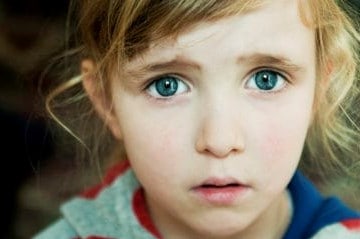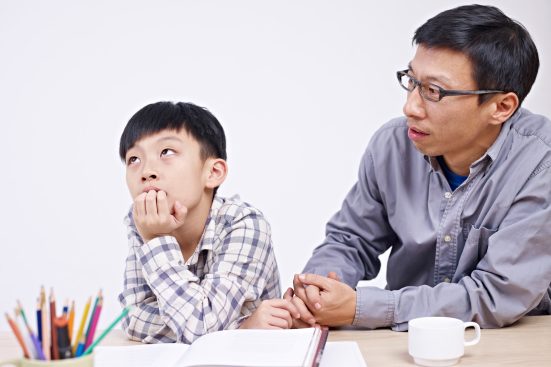I’ve just looked at our clinic calendars and despite us seeing 200 young people this week, our waiting lists for new clients are currently stretching out to around 2-3 months. More than ever, there are children and young people facing challenges – and families who are looking for support and answers.
One of the major issues facing young people is anxiety. Anxiety is the most commonly diagnosed mental health condition in children – and certainly it makes up a large proportion of the families who work with us.
Unfortunately, services can’t always keep up with demand for services in supporting kids with this issue – and getting help for children and young people who experience anxiety can take some time.
The good news is that supporting children to manage anxiety doesn’t always *need* a psychologist. Parents and carers, teachers and other professionals can be very effective at helping children manage anxiety and increase their confidence.
Here are a few ideas all adults (including psychologists, as well as teachers, health professionals, parents and carers) might find useful in supporting children with anxiety.
1. Focus on increasing brave and confident behaviour
The part of our brain which monitors threat takes notice of our body language, how we act, speak and where we go and don’t go. It then uses this information to help gauge how much threat we are actually experiencing. When we ACT in brave and confident ways, our brain says “huh, everything must be okay” – and gradually we FEEL more confident. When we ACT in brave and confident ways, we have experiences which tell us we can cope. Brave and confident behaviour helps us feel less anxious.
This is true for children too. The more we a child/teen acts in brave and confident ways, the less anxious they will feel.
It is important to try to think very specifically about what brave and confident actions or behaviours we can help a child work towards. We don’t simply want to tell children/their families to “act more confidently” but instead identify what that might actually look like. For example, when I work with families on separation anxiety, I ask parents/carers this question:
If this child was not anxious, what would we see them doing or saying in these situation? And what about in this situation?
As you can see, I am trying to identify brave and confident behaviours for us to work on. For example, at school drop off – it might be the child having their head up, saying good bye in a confident voice and walking over to friends. When Mum goes out at night, it might be a child who says “have a good time” and only calls/texts Mum one time.
I then a) explain to children why this brave behavior is important (it will slowly make you feel less afraid), b) break the behaviour down into small steps, and c) use rewards and encouragement in order to help the child start to act this way.
For example, for a child who needs help acting more confidently with peers, I might draw a “ladder” or a “snake” on a piece of paper – divide it up into many sections and ask a parent/other adult to provide the child with a stamp/smiley face every time they look at someone’s eyes and say hello.
Here you can see I am skipping straight to the “positive opposite” (thanks Alan Kazdin) – for some children I work with, this is the most important part of the invention (more so, for example, than getting them to see their “irrational” fears).
2. Slowly reduce avoidance
In the same way that acting more confidently increases confidence, acting in anxious ways over times actually increases anxiety. In other words – when children avoid situations which make them anxious, they will become more anxious.
I am always assessing any avoidance in children. This avoidance might be obvious (ie they never go near a dog) or it might be subtle (they avoid looking at something, or try to distract themselves in the presence of something).
This doesn’t mean that everything a child avoids needs to be faced. One of my children would rather die than go on a roller-coaster and frankly I’m fully supportive of his avoidance of these contraptions!
However, when the avoidance is about something that would normally enrich a child’s life – this is when it is a problem. For example when I’m working with children, I’m always on the lookout for full or subtle avoidance of – social situations, learning opportunities and new experiences – and I talk with parents/carers about how we reduce this avoidance. (I call this “scared behaviour” rather than avoidance with children/families).
This can be done gradually if needed (“you just need to go for 5 minutes”, “you can take your ipad while you are there”, “you can go and sit in the library for a while in the morning if you need”, “you only need to say one sentence”) – but it doesn’t need to be done, and gradually increased.
If we just hope the child will “grow out of” acting in an anxious way, we run the very real risk that children will become more anxious over time.
To help explain this to parents/carers and children – I draw a looping cycle on my whiteboard with a circle with “avoidance” and an arrow to “fear” and then another arrow leading back to “avoidance”. It’s important to be non-judgemental about this I find – and I will try to find an example from my own life to explain how it is absolutely instinctive to avoid things that are scary.
Sometimes I ask families if they have seen “The Croods” as this movie gives a good example of how it had a lot of survival value to avoid scary things.
3. Teach children to tolerate and manage anxiety in constructive ways
Anxiety is part of being human. And unfortunately for some people (kids and adults) – it is more debilitating than for the average person. Around 30% of people are “emotionally sensitive” with strong emotional reactions, and this often emerges in childhood or adolescence. Life can be pretty tough for people like this.
It’s important to support children to find constructive ways to live with anxiety and worry – and to ask them what has worked for them. There are many strategies we can offer young people – including those listed above – such as relaxation, exercise, social support, calming words, reducing opportunities for uninterrupted rumination. Some questions I find useful are:
What has helped you act more bravely in the past?
What times in your life have you felt less anxious?
What could you say to yourself to help you cope?
What do other kids do to help them cope with they are anxious?
How would you like to manage your worry?
I encourage children and families to have written strategies and plans. Sometimes this might just be a set of “coping cards” in a pencil case, a reminder on a phone or a set routine for bedtime worries.
4. Be prepared to not be able to “fix it” with “reasons not to worry”
Our first response when children tell us they are worried or anxious is often to tell them why they “shouldn’t” be afraid. We tell them not to worry “because…..”.
Parents/carers use this “don’t worry” approach all the time – but as professionals we do it too. There is a huge pressure on us to “fix” children who struggle with worry and we often go straight to the “but it’s fine because……………..”.
Unfortunately this often doesn’t work very well. There are two reasons for this.
First, for many children, their fear or anxiety is not entirely based on rational arguments – it’s “just a feeling”. If you consider separation anxiety as an example – many children who experience this can’t explain why, or what they are worried about – they just feel anxious and uncomfortable when they are away from their caregivers. We usually can’t fix this problem by giving kids reasons to be calm – because they are not worried about any particular problem – they just feel anxious.
The second reason why using logic doesn’t always work is that we do live in an uncertain world – and scary and difficult events do occur. Children know this. A very bright child I was working with recently was extremely anxious about his parents getting cancer. Mum/Dad had talked endlessly with him about their current good health – to no avail. He was still worried because he knew that 1 in 3 Australians will get cancer in their lifetime.
Instead of trying to tell a child not to worry and to endlessly reassure them – sometimes we need to just be with them.
Remember the last time you felt worried about something at work/home/with your family, and a friend empathised, listened and cared for you? If you are like most of us, it made you feel a little better. Maybe more than if they’d just said “you should stop worrying because………..”
Empathy can be helpful for children too.
I’m sorry you are worried about this.
I can see you are anxious – may I give you a hug?
I think lots of kids feel worried about this sometimes.
I’ve worried about that too.
It is not possible – nor our job – to remove all worry and anxiety from children’s lives.
But it is possible – and our job in part – to care for them as they experience it.
All the best for your work with children
Kirrilie



